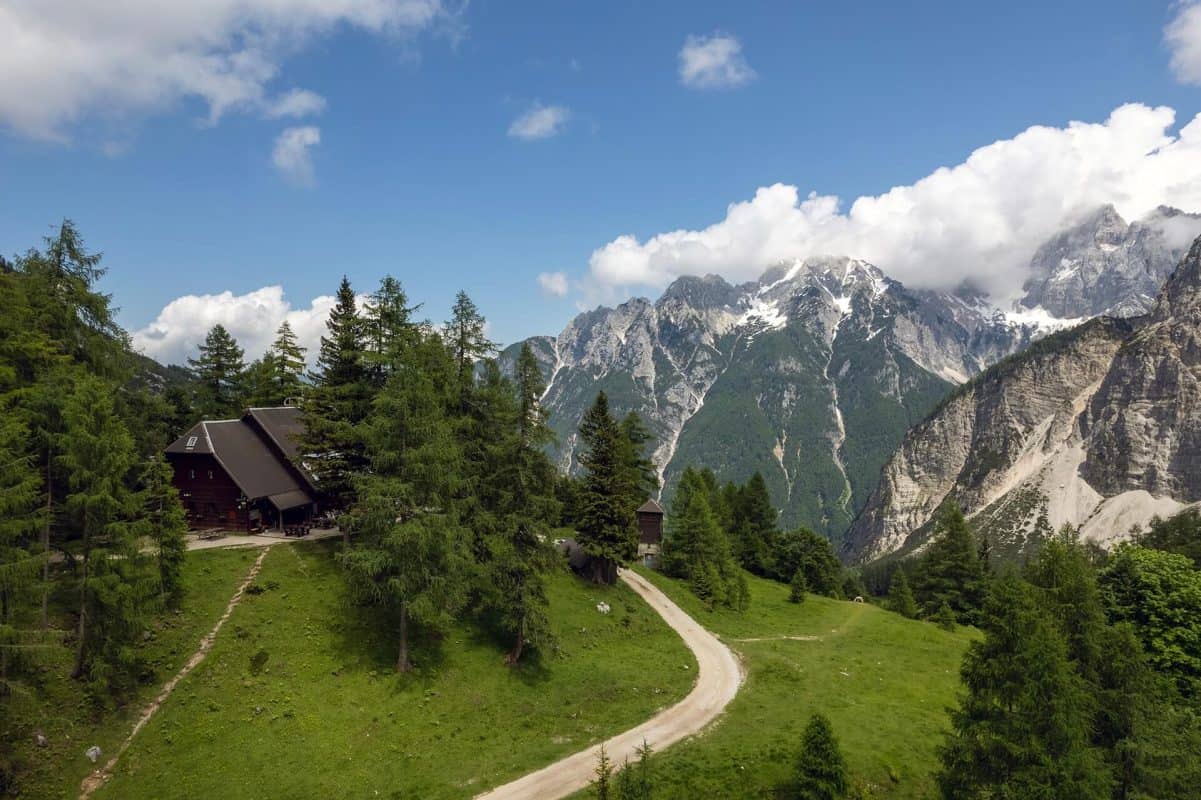Predil fortress
Predil fortress
Predel Fortress was one of the six fortresses that comprised the system of Carinthian fortresses. It stands a few hundred meters from the Predel Pass. The first fortress was established during the time of the Napoleonic Wars. It was burned down twice during fierce battles. In 1848, a decision was made to build a new fortress on the site of the old one. It served its purpose until 1880 when a commission determined that the defence no longer met current military regulations, so it was converted into an army depot. It maintained this function until the end of World War I. Due to the lack of maintenance after the war, the buildings fell into disrepair, and today, only relatively well-preserved walls can be seen.
The most beautiful road circle trip from Erjavčeva mountain hut goes to Bovec and around trough Italy where you can see and stop at Predil fortress.
Predil fortress

Recommended
History

Distance
41 km

Need to Know
Must see

Predil fortress
Foto by: Johann Jaritz and Mihael Grmek
Predil fortress
The Predil Fortress, known as Fort Predil in Italian, is a historic military fortification in the Predil Pass area of the Julian Alps, near the border between Italy and Slovenia. Built during the 19th century, the fortress is a testament to the strategic importance of the region and the area’s military history. Here are some key points about the Predil Fortress:
Historical Significance of Predil fortress:
- Strategic Location: The Predil Pass has long been recognised as a critical strategic route connecting the Austrian Empire (later Austria-Hungary) with the Italian territories. Control over the past was vital for military and commercial reasons.
- Construction: The construction of the Predil Fortress began in the mid-19th century during the reign of the Austrian Empire. Its primary purpose was to defend the Austrian territories from potential invasions from the south, particularly from the Italian side of the Alps.
- Military Importance: The fortress played a crucial role in the defence strategy of the Austrian Empire, serving as a stronghold against potential threats from neighbouring states.
Architecture and Design:
- Fortification Structure: The Predil Fortress is built strategically overlooking the Predil Pass, providing commanding views of the surrounding landscape. Its design includes thick stone walls, defensive ramparts, and artillery emplacements to protect the pass from enemy incursions.
- Strategic Features: The fortress was equipped with barracks, storage facilities, artillery batteries, and other infrastructure necessary for maintaining a garrison and sustaining defensive operations.
- Integration with Landscape: The fortress was designed to blend seamlessly with the Julian Alps’s rugged terrain, using natural features to enhance its defensive capabilities.
Military History of Predil fortress:
- Role in Conflicts: The Predil Fortress saw action during various conflicts and wars of the 19th and early 20th centuries, including the Austro-Italian Wars and World War I.
- Strategic Control: Control over the Predil Pass and the fortress was fiercely contested by opposing forces seeking to gain access to or prevent movement through the strategic route.
- Legacy: Despite its formidable defences, the fortress ultimately became obsolete with advances in military technology and geopolitical dynamics.
Present-Day:
- Tourist Attraction: Today, the Predil Fortress stands as a historic landmark and tourist attraction, offering visitors a glimpse into the region’s military history and the era’s architectural prowess.
- Visitor Experience: Visitors can explore the fortress grounds, tour its interior spaces, and learn about its history through interpretive exhibits and guided tours.
- Scenic Surroundings: The fortress is situated amidst the breathtaking scenery of the Julian Alps, making it a popular destination for nature enthusiasts, hikers, and photographers.
In conclusion, the Predil Fortress symbolises the region’s military heritage and strategic significance. Its imposing presence and historic significance make it a compelling destination for visitors seeking to explore the history and natural beauty of the Julian Alps.

Gallery

Directions

Weather
Accommodation in a mountain hut
Trips and Hikes around the hut
Your next destination in slovenia?
Erjavčeva mountain hut is open the whole year. Reserve your stay and spend some time in the natural paradise of Triglav National Park (UNESCO) near Kranjska Gora on Vršič mountain pass in the heart of Triglav National Park.
Reserve your stay


 English
English Deutsch
Deutsch Dutch
Dutch






















